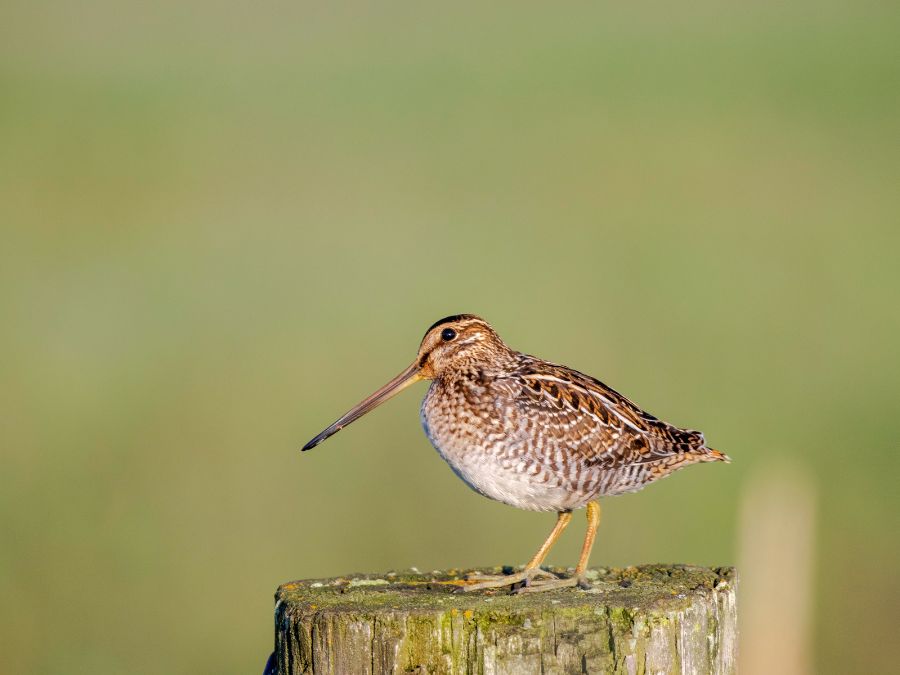Natural Carteret — 5 Min Read
Dark skies, warm nights
By Jessi Waugh
Natural Carteret — 5 Min Read
Dark skies, warm nights
By Jessi Waugh
As Earth orbits the Sun, we’re treated to a seasonal tour of constellations and planets that keeps the night sky interesting, like a scenic drive through Carteret County’s ever-changing landscapes.
From the milky-white band of stars reminiscent of our beautiful beaches to the winter’s meteor showers that streak the sky, the celestial sights parallel our county’s rich tapestry of experiences, and this month is the perfect time for a night sky tour along the Carolina coast.
Summer ends on September 23rd at three o’clock in the morning. The days are becoming shorter, the nights longer, but there’s one silver lining – stargazing starts earlier in the evening.In summer, the stars, planets, and beyond don’t become visible until around nine o’clock at night. I don’t know about you, but that’s late for me. That’s on-the-couch-with-a-book time, that’s in-bed time. That’s not looking-at-the-sky time.
But as the summer ends, the stars show their faces a minute earlier each evening, until you can observe the night sky and still manage a solid eight hours of beauty rest.
Of course, you could wait until winter, when the sun sets before dinner’s even served, but winter is…cold. We’re southern beach people – we don’t do cold. At the Crystal Coast, September nights are still balmy and pleasant, perfect for stargazing.
As Earth orbits the Sun, we’re treated to a seasonal tour of constellations and planets that keeps the night sky interesting, like a scenic drive through Carteret County’s ever-changing landscapes.
From the milky-white band of stars reminiscent of our beautiful beaches to the winter’s meteor showers that streak the sky, the celestial sights parallel our county’s rich tapestry of experiences, and this month is the perfect time for a night sky tour along the Carolina coast.
Summer ends on September 23rd at three o’clock in the morning. The days are becoming shorter, the nights longer, but there’s one silver lining – stargazing starts earlier in the evening.In summer, the stars, planets, and beyond don’t become visible until around nine o’clock at night. I don’t know about you, but that’s late for me. That’s on-the-couch-with-a-book time, that’s in-bed time. That’s not looking-at-the-sky time.
But as the summer ends, the stars show their faces a minute earlier each evening, until you can observe the night sky and still manage a solid eight hours of beauty rest.
Of course, you could wait until winter, when the sun sets before dinner’s even served, but winter is…cold. We’re southern beach people – we don’t do cold. At the Crystal Coast, September nights are still balmy and pleasant, perfect for stargazing.
In September, Saturn is bright, and with a telescope, you can see its rings. Pegasus (the winged horse) is in the sky, with Cassiopeia, a Greek queen. Pegasus once rescued Cassiopeia’s daughter from a sea monster, so they’re old friends. Cassiopeia is a “W” shaped constellation, and its middle star points to Polaris, the North Star. Polaris is not the brightest star in the sky, but it is visible year-round, world-round, and that is rare amongst the stars.
September’s Perseid meteor shower peaks early this month, just in time for Fort Macon’s Astronomy Night on Friday September 8th, from 8-9pm (check Facebook for cancellations due to weather).
The moon will be a waning crescent, a thin sliver on the way to disappearing, so the night sky will be good and dark. Park near the bathhouse, turn off your headlights so you don’t blind the participants, and be prepared to be star-struck.
The show begins with a talk by park ranger Paul Terry. He’ll point out interesting features in the night sky and help attendees look through a telescope at planets or stars. Then, Crystal Coast Stargazers, a local astronomy club, takes it to the next level. They attend Fort Macon’s events, bringing their own telescopes and expertise; they also organize events at Harker’s Island and Cape Lookout – check their website for details. They even host starlight cruises!
We couldn’t ask for a better place for stargazing than the Cape Lookout National Seashore. It is the only National Park on the East Coast with an International Dark Sky certification. That means you can see the Milky Way at Cape Lookout, that bright belt of our galaxy’s stars, which once was as common a sight as the moon itself. Read more about Cape Lookout’s Dark Sky designation in July’s Southern Living.
Whether you’re at Cape Lookout, Fort Macon, or in your own backyard, come outside after dark. The skeeters are dying, the air is cooling, the stars are coming out while you’re awake, and it’s time to look up, at the beauty of the Carolina night sky.
In September, Saturn is bright, and with a telescope, you can see its rings. Pegasus (the winged horse) is in the sky, with Cassiopeia, a Greek queen. Pegasus once rescued Cassiopeia’s daughter from a sea monster, so they’re old friends. Cassiopeia is a “W” shaped constellation, and its middle star points to Polaris, the North Star. Polaris is not the brightest star in the sky, but it is visible year-round, world-round, and that is rare amongst the stars.
September’s Perseid meteor shower peaks early this month, just in time for Fort Macon’s Astronomy Night on Friday September 8th, from 8-9pm (check Facebook for cancellations due to weather).
The moon will be a waning crescent, a thin sliver on the way to disappearing, so the night sky will be good and dark. Park near the bathhouse, turn off your headlights so you don’t blind the participants, and be prepared to be star-struck.
The show begins with a talk by park ranger Paul Terry. He’ll point out interesting features in the night sky and help attendees look through a telescope at planets or stars. Then, Crystal Coast Stargazers, a local astronomy club, takes it to the next level. They attend Fort Macon’s events, bringing their own telescopes and expertise; they also organize events at Harker’s Island and Cape Lookout – check their website for details. They even host starlight cruises!
We couldn’t ask for a better place for stargazing than the Cape Lookout National Seashore. It is the only National Park on the East Coast with an International Dark Sky certification. That means you can see the Milky Way at Cape Lookout, that bright belt of our galaxy’s stars, which once was as common a sight as the moon itself. Read more about Cape Lookout’s Dark Sky designation in July’s Southern Living.
Whether you’re at Cape Lookout, Fort Macon, or in your own backyard, come outside after dark. The skeeters are dying, the air is cooling, the stars are coming out while you’re awake, and it’s time to look up, at the beauty of the Carolina night sky.




